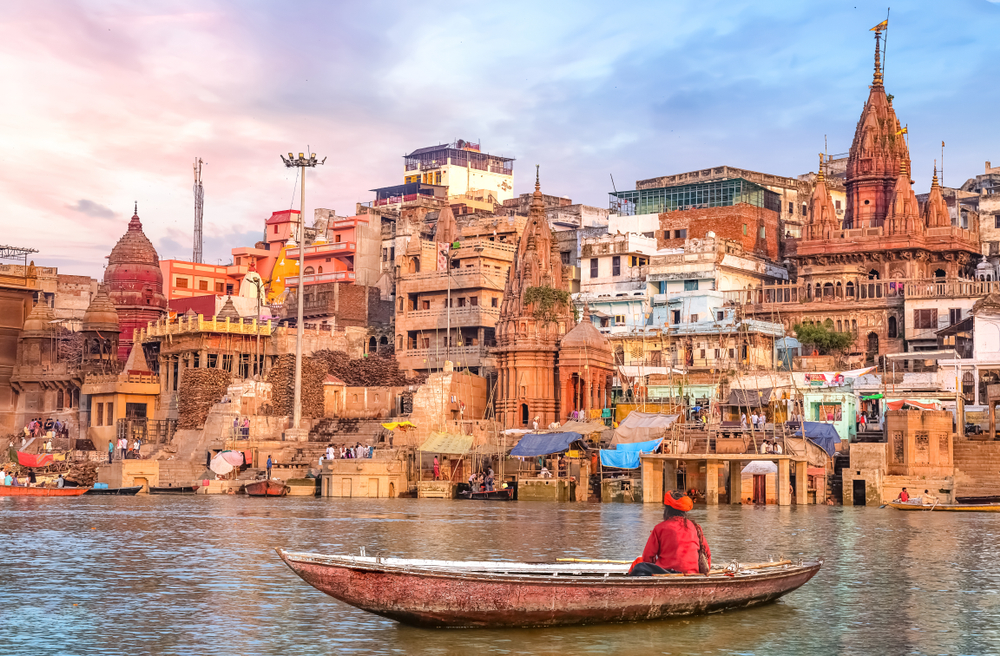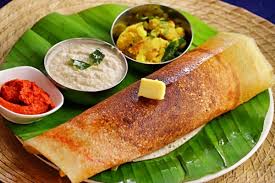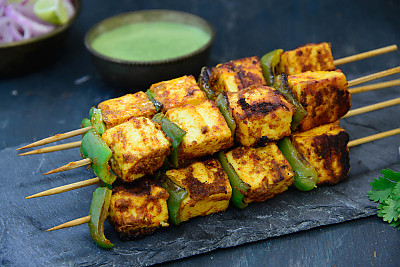India, often referred to as the subcontinent, is a land of immense diversity and rich cultural heritage. Stretching from the snow-capped Himalayas in the north to the tropical beaches of the south, and from the arid deserts of the west to the lush green forests of the east, India offers an unparalleled variety of landscapes. The country is the seventh-largest in the world by land area, covering approximately 3.287 million square kilometers, and the second-most populous, with over 1.4 billion people. This vast and varied geography has shaped India’s history, culture, and way of life in profound ways.
Geography
India is located in South Asia and shares its borders with Pakistan to the northwest, China and Nepal to the north, Bhutan to the northeast, and Bangladesh and Myanmar to the east. It is surrounded by the Indian Ocean to the south, the Arabian Sea to the southwest, and the Bay of Bengal to the southeast. Covering an area of about 3.287 million square kilometers, India is the seventh-largest country in the world by land area. The country’s diverse terrain includes the Himalayan range in the north, which acts as a natural barrier and influences the climate and ecology.
South of the Himalayas lies the fertile Indo-Gangetic Plain, one of the most densely populated regions in the world, nourished by major rivers like the Ganges, Yamuna, and Brahmaputra. The Thar Desert in the west contrasts sharply with the fertile plains, while the Deccan Plateau forms the central region of the country. The plateau is flanked by the Western and Eastern Ghats, which are home to rich biodiversity and lead down to the coastal plains bordering the Indian Ocean, Arabian Sea, and Bay of Bengal. India’s geography also includes numerous islands, such as the Andaman and Nicobar Islands in the Bay of Bengal and the Lakshadweep Islands in the Arabian Sea.
States And Union Territories Of India
States of India and Their Capitals
| No. | State | Capital |
|---|---|---|
| 1 | Andhra Pradesh | Amaravati |
| 2 | Arunachal Pradesh | Itanagar |
| 3 | Assam | Dispur |
| 4 | Bihar | Patna |
| 5 | Chhattisgarh | Raipur |
| 6 | Goa | Panaji |
| 7 | Gujarat | Gandhinagar |
| 8 | Haryana | Chandigarh |
| 9 | Himachal Pradesh | Shimla |
| 10 | Jharkhand | Ranchi |
| 11 | Karnataka | Bengaluru |
| 12 | Kerala | Thiruvananthapuram |
| 13 | Madhya Pradesh | Bhopal |
| 14 | Maharashtra | Mumbai |
| 15 | Manipur | Imphal |
| 16 | Meghalaya | Shillong |
| 17 | Mizoram | Aizawl |
| 18 | Nagaland | Kohima |
| 19 | Odisha | Bhubaneswar |
| 20 | Punjab | Chandigarh |
| 21 | Rajasthan | Jaipur |
| 22 | Sikkim | Gangtok |
| 23 | Tamil Nadu | Chennai |
| 24 | Telangana | Hyderabad |
| 25 | Tripura | Agartala |
| 26 | Uttar Pradesh | Lucknow |
| 27 | Uttarakhand | Dehradun |
| 28 | West Bengal | Kolkata |
Union Territories of India and Their Capitals
| No. | Union Territory | Capital |
|---|---|---|
| 1 | Andaman and Nicobar Islands | Port Blair |
| 2 | Chandigarh | Chandigarh |
| 3 | Dadra and Nagar Haveli and Daman and Diu | Daman |
| 4 | Lakshadweep | Kavaratti |
| 5 | Delhi (National Capital Territory) | New Delhi |
| 6 | Puducherry | Puducherry |
| 7 | Jammu and Kashmir | Srinagar (Summer), Jammu (Winter) |
| 8 | Ladakh | Leh |
Rich Historical Tapestry
India’s rich history dates back thousands of years and is a testament to the country’s enduring legacy. From the ancient Indus Valley Civilization, which is one of the world’s oldest urban cultures, to the Vedic Age that laid the foundation for Hinduism, India’s historical tapestry is intricate and varied. The rise and fall of great empires like the Maurya, Gupta, and Mughal empires have left an indelible mark on the subcontinent, influencing its culture, architecture, and traditions.
The Maurya Empire, under the leadership of Emperor Ashoka, was one of the largest and most powerful political and military empires in ancient India. Ashoka’s reign is notable for the spread of Buddhism and the establishment of a unified government. Following the decline of the Maurya Empire, the Gupta Empire emerged, heralding a golden age of Indian culture, science, and intellectual pursuits. This period saw significant advancements in mathematics, astronomy, literature, and the arts.
The Mughal Empire, which began in the early 16th century, brought about a fusion of Persian and Indian cultures, leading to the creation of iconic architectural wonders such as the Taj Mahal. The Mughals also contributed to the flourishing of arts, music, and cuisine in India. Despite the eventual decline of the Mughal Empire, its cultural and architectural legacy continues to influence India to this day.
Diverse Culture and Traditions
India is a mosaic of cultures, languages, and religions, making it one of the most diverse countries in the world. The Indian Constitution recognizes 22 official languages, with Hindi being the most widely spoken, followed by Bengali, Telugu, Marathi, Tamil, and Urdu. Each region in India has its own distinct culture, traditions, and customs, which are celebrated through various festivals and rituals.
Religious diversity is another hallmark of Indian society. Hinduism, Buddhism, Jainism, and Sikhism all originated in India, and the country is home to significant populations of Muslims, Christians, Jews, and Zoroastrians. This religious diversity is reflected in India’s festivals, places of worship, and daily practices. Major festivals such as Diwali, Eid, Christmas, and Vaisakhi are celebrated with great fervor and enthusiasm across the country, bringing people from different communities together.
Top Ten Must-Visit Villages in India
| No. | Village | State |
|---|---|---|
| 1 | Mawlynnong | Meghalaya |
| 2 | Khimsar | Rajasthan |
| 3 | Ziro | Arunachal Pradesh |
| 4 | Malana | Himachal Pradesh |
| 5 | Chitkul | Himachal Pradesh |
| 6 | Majuli | Assam |
| 7 | Gokarna | Karnataka |
| 8 | Kasol | Himachal Pradesh |
| 9 | Poovar | Kerala |
| 10 | Nako | Himachal Pradesh |
Indian Cuisine: A Culinary Journey
Indian cuisine is renowned for its rich flavors, diverse ingredients, and regional variations. Each state in India has its own unique culinary traditions, influenced by local produce, climate, and cultural practices. The use of spices is a defining characteristic of Indian food, with ingredients like cumin, coriander, turmeric, and cardamom playing a central role in many dishes.
North Indian cuisine is known for its rich and creamy gravies, tandoori dishes, and bread like naan and paratha. Popular dishes include butter chicken, paneer tikka, and biryani. In contrast, South Indian cuisine is characterized by its use of rice, coconut, and tamarind, with dishes such as dosa, idli, and sambar being staples. The coastal regions of India offer a variety of seafood dishes, while the western states are known for their vegetarian fare, such as Gujarati thali and Rajasthani dal baati churma.
Indian sweets, or mithai, are an integral part of the culinary landscape. Delicacies like gulab jamun, jalebi, and rasgulla are enjoyed during festivals and special occasions. Street food is another popular aspect of Indian cuisine, with snacks like samosas, chaat, and vada pav being favorite choices among locals and tourists alike.
Top Must-Visit Destinations in India
India, a land of diverse cultures, languages, and landscapes, offers an array of stunning destinations that captivate travelers. From ancient temples to vibrant cities, here are some must-visit places that showcase the beauty and heritage of India.
Taj Mahal, Agra

The Taj Mahal is an iconic symbol of love and one of the Seven Wonders of the World. Built by Mughal Emperor Shah Jahan in memory of his wife Mumtaz Mahal, this white marble mausoleum mesmerizes visitors with its intricate architecture and serene gardens. The changing hues of the Taj during sunrise and sunset create a breathtaking view that draws millions of tourists each year.
Jaipur, Rajasthan

Known as the Pink City, Jaipur is famous for its royal palaces and forts. Highlights include the magnificent Amber Fort, the City Palace, and the Hawa Mahal, also known as the Palace of Winds. Jaipur’s colorful bazaars are perfect for shopping for traditional handicrafts, textiles, and jewelry, providing a glimpse into the rich heritage of Rajasthan.
Varanasi, Uttar Pradesh

As one of the oldest inhabited cities in the world, Varanasi holds great spiritual significance for Hindus. The ghats along the Ganges River are a sight to behold, especially during the evening Ganga Aarti, where devotees gather to pay homage to the river. The narrow alleys filled with temples and shops create an atmosphere that is both vibrant and deeply spiritual.
Kerala Backwaters

The serene backwaters of Kerala offer a unique experience of tranquility and natural beauty. Houseboat cruises through the lush green landscapes, coconut groves, and small villages provide a glimpse into the state’s rich culture and lifestyle. The backwaters are also home to diverse wildlife, making it an ideal spot for nature enthusiasts.
Goa

Famous for its stunning beaches, vibrant nightlife, and Portuguese heritage, Goa is a paradise for both relaxation and adventure. Whether you want to sunbathe on pristine shores or explore ancient churches, Goa has something for everyone. The lively atmosphere, beach shacks, and water sports make it a popular destination for both domestic and international tourists.
Mysore, Karnataka

Mysore is renowned for its magnificent Mysore Palace, a stunning example of Indo-Saracenic architecture. The city is also famous for its annual Dasara festival, celebrating the victory of good over evil, with grand processions and cultural events. The bustling markets of Mysore are perfect for sampling traditional sweets like Mysore Pak and shopping for silk sarees.
Ranthambore National Park, Rajasthan

For wildlife enthusiasts, Ranthambore National Park offers an exciting opportunity to spot tigers in their natural habitat. The park’s rich biodiversity includes various species of flora and fauna, making it a perfect destination for nature lovers. Jeep safaris provide an exhilarating experience as visitors explore the park’s stunning landscapes and ancient ruins.
Hampi, Karnataka

A UNESCO World Heritage Site, Hampi is known for its ancient ruins and stunning landscapes. The historical town is filled with temples, royal structures, and boulders, offering a glimpse into the grandeur of the Vijayanagara Empire. The intricate carvings and unique architecture make Hampi a treasure trove for history buffs and photographers alike.
Leh-Ladakh

Leh-Ladakh, with its breathtaking landscapes, rugged mountains, and serene lakes, is a haven for adventure seekers. Popular attractions include Pangong Lake, Nubra Valley, and monasteries like Hemis and Thiksey, showcasing the region’s unique culture. The stunning views and challenging treks attract thrill-seekers and those looking to experience the tranquility of the Himalayas.
Darjeeling, West Bengal

Famous for its tea plantations and stunning views of the Himalayas, Darjeeling is a charming hill station. The toy train ride through picturesque landscapes and a visit to Tiger Hill for sunrise views of Kanchenjunga are highlights of this destination. Darjeeling’s rich colonial history and vibrant local culture add to its allure, making it a perfect getaway for nature lovers and peace seekers.
Traditional Arts and Crafts
India’s rich cultural heritage is also reflected in its traditional arts and crafts. Each region of the country boasts its own unique art forms, ranging from intricate handwoven textiles to exquisite pottery and metalwork. Handicrafts play a significant role in the livelihoods of many rural communities and are an important aspect of India’s cultural identity.
Textile weaving is a prominent craft in India, with regions like Gujarat, Rajasthan, and Tamil Nadu being renowned for their vibrant and intricate fabrics. The Banarasi silk sarees of Varanasi, the Pashmina shawls of Kashmir, and the Kanjeevaram silk sarees of Tamil Nadu are some of the most celebrated textiles in the country. These handwoven textiles are often adorned with traditional motifs and patterns, showcasing the skill and creativity of Indian artisans.
Pottery and ceramics are other significant crafts in India. The blue pottery of Jaipur, the terracotta work of West Bengal, and the black pottery of Manipur are notable examples of India’s diverse ceramic traditions. These handcrafted items are often used for decorative purposes and are an important part of India’s cultural heritage.
Performing Arts: Dance and Music
India’s performing arts, particularly dance and music, are deeply rooted in the country’s cultural traditions. Classical dance forms such as Bharatanatyam, Kathak, Odissi, and Kathakali are characterized by their intricate footwork, expressive gestures, and elaborate costumes. These dance forms often tell stories from Hindu mythology and are performed during religious festivals and cultural events.
Indian classical music, which includes the Hindustani and Carnatic traditions, is known for its complex rhythms and improvisational nature. Instruments such as the sitar, tabla, and veena are commonly used in classical music performances. In addition to classical music, India has a rich tradition of folk music, with each region having its own distinctive styles and instruments.
Bollywood, India’s thriving film industry, has also made a significant impact on the country’s music and dance culture. Bollywood songs and dance routines are a major part of Indian popular culture and have gained international recognition for their catchy tunes and vibrant choreography.
Festivals: A Celebration of Life
Festivals are an integral part of Indian culture and are celebrated with great enthusiasm and fervor throughout the year. These festivals often have religious significance and are marked by elaborate rituals, feasts, and cultural performances. Major festivals such as Diwali, Holi, Eid, and Christmas are celebrated across the country, bringing people from different communities together in a spirit of joy and harmony.
Diwali, the festival of lights, is one of the most widely celebrated festivals in India. It marks the victory of light over darkness and good over evil. Homes are decorated with oil lamps and colorful rangoli patterns, and families come together to exchange gifts and enjoy festive meals. Holi, the festival of colors, is another popular festival celebrated with vibrant colors, music, and dance.
Eid, which marks the end of Ramadan, is an important festival for Muslims in India. It is celebrated with prayers, feasting, and the exchange of sweets and gifts. Christmas, although primarily a Christian festival, is celebrated by people of all faiths in India with carol singing, decorating Christmas trees, and sharing festive meals.
Top Eight Most Famous Food of India








Spiritual Heritage and Pilgrimage Sites
India is known for its rich spiritual heritage and is home to numerous pilgrimage sites that attract millions of devotees from around the world. The country is the birthplace of several major religions, including Hinduism, Buddhism, Jainism, and Sikhism, and has a long tradition of spiritual practices and philosophies.
Varanasi, one of the oldest cities in the world, is considered the spiritual capital of India. It is a major pilgrimage site for Hindus, who come to bathe in the sacred waters of the Ganges River and perform religious rituals. The city is also known for its ancient temples and ghats, which are an integral part of its spiritual landscape.
Bodh Gaya, where Gautama Buddha attained enlightenment, is one of the most important pilgrimage sites for Buddhists. The Mahabodhi Temple, a UNESCO World Heritage site, is a major attraction in Bodh Gaya and draws pilgrims and tourists alike. Similarly, the Golden Temple in Amritsar is a significant pilgrimage site for Sikhs and is known for its stunning architecture and spiritual ambiance.
Modern India: Progress and Innovation
While deeply rooted in its cultural and historical heritage, India is also a country of remarkable progress and innovation. Over the past few decades, India has
emerged as a major player in the global economy, with significant advancements in technology, science, and industry. The country’s IT sector, in particular, has gained international recognition for its contributions to the global technology landscape.
India is also making strides in space exploration, with organizations like the Indian Space Research Organisation (ISRO) achieving notable milestones. The successful launch of the Mars Orbiter Mission (Mangalyaan) and the Chandrayaan missions to the moon are testaments to India’s growing capabilities in space technology.
In addition to technological advancements, India is also making efforts to address social and environmental challenges. Initiatives such as the Swachh Bharat Abhiyan (Clean India Mission) and the promotion of renewable energy sources are aimed at improving the quality of life for its citizens and ensuring sustainable development.
Conclusion
India is a country of contrasts and complexities, where ancient traditions coexist with modern advancements. Its diverse geography, rich cultural heritage, and spiritual legacy make it a unique and fascinating destination. From the majestic Himalayas to the serene backwaters of Kerala, and from the bustling cities to the tranquil villages, India offers a tapestry of experiences that captivate the senses and enrich the soul. As the country continues to evolve and grow, it remains a land of endless possibilities and timeless charm.
let’s enjoy few years on earth with peace and happiness….



